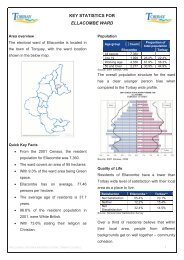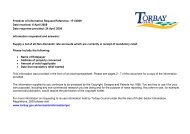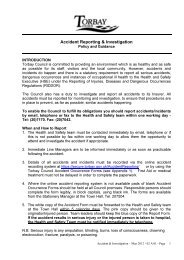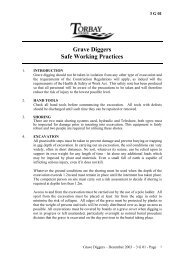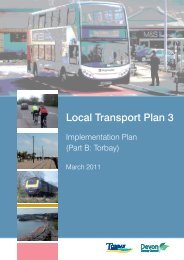Liquefied Petroleum Gas (LPG) Safe Working Practices
Liquefied Petroleum Gas (LPG) Safe Working Practices
Liquefied Petroleum Gas (LPG) Safe Working Practices
You also want an ePaper? Increase the reach of your titles
YUMPU automatically turns print PDFs into web optimized ePapers that Google loves.
3 L 04<br />
Weeds, long grass and other combustible material should be removed from the area around a<br />
cylinder store or tank. If an automatic alarm system has been installed then this should be<br />
checked regularly.<br />
EMERGENCY ACTION<br />
In cases of emergency it is of paramount importance to avoid endangering life, and although<br />
it is impossible to set down a fixed procedure for every eventuality the following actions<br />
should be carried out in all but the most minor hazard situations:-<br />
• Summon the fire brigade, and police if necessary. Inform emergency services personnel<br />
of the location of all <strong>LPG</strong> stocks.<br />
• Evacuate all persons from the danger area, except those necessary to deal with the<br />
emergency.<br />
• Confirm to the fire-fighting services that nobody is trapped and that the supply<br />
company’s representative will be notified.<br />
In the case of gas leakage without fire, stop the escape of gas at the earliest possible moment<br />
either by normal or emergency means. If this is not possible, remove defective cylinders to a<br />
safe area. Ignition hazards must be avoided - naked lights, fires, vehicle engines, boilers,<br />
electrical equipment; vehicles should be abandoned and not driven away, and telephones in<br />
the danger area not used.<br />
In the case of gas leakage with fire, the first concern should be to examine the possibility of<br />
cutting off the source of leakage and only if this is possible should an attempt be made to<br />
extinguish the fire using dry powder extinguishers.<br />
Using <strong>LPG</strong><br />
CONNECTING CYLINDERS<br />
Stand the cylinder upright, on a firm base, in the required position and away from any<br />
lowlevel features such as trenches, cellars, etc.<br />
Check that the main valve is closed, then remove the protecting cap or plug - the thread is<br />
“left-hand” (turn clockwise to unscrew).<br />
Return valve protecting cap or plug and, where provided, valve cover cap, to a safe place.<br />
Check that threads on cylinder and regulator are clean and undamaged, and that the valve<br />
outlet conforms to BS 341, Part 1, to prevent butane control equipment being used on<br />
propane, and vice versa.<br />
Have the correct size of spanner and screwdriver available.<br />
Ensure that the regulator is fitted to the cylinder without straining piping or hose which could<br />
cause failure and cross threading of the nut.<br />
SAFE METHODS OF OPERATION<br />
1. Check that burners and containers have sufficient ventilation.<br />
2. See that burners are protected from draughts which might extinguish the flame.<br />
<strong>LPG</strong> – June 2001 – 3 L 04 - Page 3








